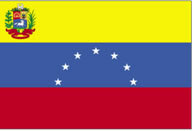O nucleus of cells is the place where the DNA of cells, that is, it is the organelle that contains all the genetic material of organisms eukaryotes.
We prepared a list of cell nucleus exercises so that you can test your knowledge about this organelle that controls cellular functions.
see more
Ninth economy on the planet, Brazil has a minority of citizens with…
Brasilia public school keeps autistic student in 'private prison'
You can check the template and save the list in PDF at the end of the post!
Exercises – Cell Core
1) (Cesgranrio) Of the cellular constituents listed below, which one is present only in eukaryotes and represents one of the criteria used to distinguish them from prokaryotes?
a) DNA.
b) Cell membrane.
c) Ribosome.
d) Nuclear envelope.
e) RNA.
2) (UFLA) Which of the following is correct in relation to the nucleolus?
a) It is a membrane-enclosed intranuclear structure.
b) It is not visible in the interphase nucleus.
c) It is the site of synthesis of ribosomal RNA and ribosomal subunits.
d) It is the site of synthesis of ribosomal proteins.
3) (PUC-RJ) The difference between eukaryotic and prokaryotic cells is in the nucleus. Prokaryotic individuals have the DNA molecule scattered in the cytoplasm, while, in eukaryotic individuals, it is found in the nucleus of the cell. As for this core, it is correct to state that:
a) A healthy nucleus of a cell always has a round shape and is found in its center, as it controls the entire cell equally.
b) in the nucleus is found the chromatin, which is the association of DNA molecules and proteins, immersed in the cytoplasm and surrounded by the nuclear membrane.
c) the nucleus is the region of the cell that controls all protein production, since it contains the DNA molecule.
d) In addition to the DNA molecule, the nucleus of the cell contains other organoids, such as ribosomes and reticulum.
e) it is the nucleus that characterizes blue bacteria and algae, since they are unicellular beings.
4) (PUC-SP) The chromatin, under the morphological aspect, is classified into euchromatin and heterochromatin. They are distinguished because:
a) euchromatin is condensed during mitosis and heterochromatin is already condensed in interphase.
b) euchromatin is condensed during interphase and heterochromatin during mitosis.
c) only heterochromatin condenses and euchromatin does not.
d) euchromatin is Feulgen positive and heterochromatin is Feulgen negative.
e) euchromatin is found in the nucleus and heterochromatin is found in the cytoplasm.
5) Most eukaryotic cells have one nucleus, however, some may have two or even multiple nuclei. There are also those that, after being specialized, become non-nucleated, such as:
a) leukocytes.
b) red blood cells.
c) muscle cells.
d) neurons.
e) epithelial cells.
6) We can say that the nucleolus is a structure:
a) intranuclear, visible only under the electron microscope, present in cells in anaphase.
b) intranuclear, rich in messenger RNA, present in some viruses.
c) intranuclear, rich in ribosomal RNA, present in cells in anaphase.
d) cytoplasmic, present in some protozoans.
e) cytoplasmic, rich in ribosomal RNA, with the function of synthesizing enzymes of the respiratory cycle.
7) (FCC) The chromatin present in the interphase nucleus appears during cell division with a different structural organization, transforming into:
a) chronometers.
b) chromosomes.
c) centromeres.
d) chromocenters.
e) chromonemes.
8) We know that the nucleus of eukaryotic cells is delimited by a membrane called karyotheca. Regarding this structure, check the alternative incorrect:
a) The nuclear membrane consists of a single membrane with several pores.
b) The pores of the nucleus select what enters and what leaves the nucleus.
c) The nuclear envelope allows the nucleus and cytoplasm to be chemically different.
d) The nuclear membrane communicates with the endoplasmic reticulum.
9) (PUC-SP) In the Biology class, the professor made the following statement: “The production of ribosomes depends, indirectly, on the activity of the chromosomes”. He then asked his students to analyze the statement and explain it. Five different explanations were obtained, which are listed below. Tick the only correct statement:
a) Chromosomes are essentially composed of ribosomal RNA and proteins, material used in the production of ribosomes.
b) chromosomes are made up essentially of messenger RNA and proteins, material used in the production of ribosomes.
c) chromosomes contain DNA; this controls the synthesis of ribonucleoproteins that will form the nucleolus and that, later, will be part of the ribosomes.
d) the chromosomes are constituted essentially by RNA transporter and proteins, material used in the production of ribosomes.
e) the chromosomes, produced from the nucleolus, provide material for the organization of ribosomes.
10) We can say that the nucleus of a eukaryotic cell has four basic components. Are they:
a) nuclear envelope, RNA, DNA and nucleosome.
b) karyotheque, nucleosome, histones and nucleoplasm.
c) karyotheca, chromatin, nucleolus and nucleoplasm.
d) karyotheque, DNA, nucleolus and nucleosome.
feedback
1 — d
2 — c
3 — c
4 — the
5 — b
6 — c
7 — c
8 — the
9 — c
10 — c
Click here to save this list of exercises in PDF!
See too:
- List of exercises on the chemical composition of the cell
- List of exercises on nucleic acids
- List of exercises on amino acids
- List of exercises on eukaryotic cells

